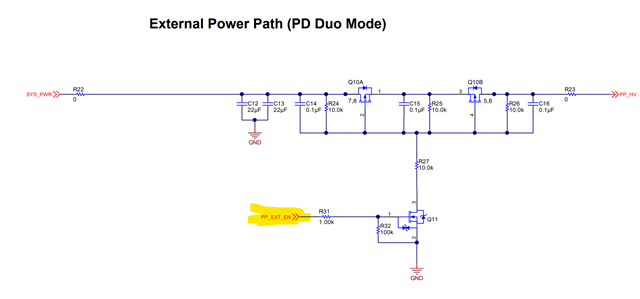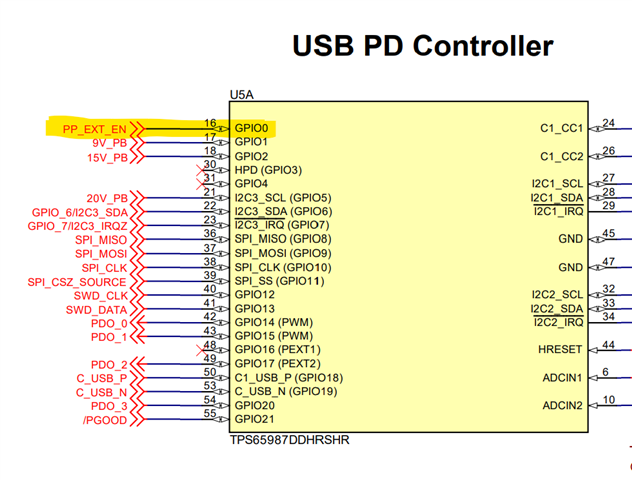Other Parts Discussed in Thread: TIDA-050012, TPS65987, , TPS65987D, LM3489
Hi,
I am designing a USB3.2 Gen 2 Hub with PD capabilities to 100W. One of the DFPs with be the source PD port with data.
I've been following the Hardware design guidelines and the schematic for the EVM Power Duo (TIDA-050012) pretty closely.
I have several question about how to set the schematic up along with the configuration tool to accomplish our goals.
1) We are good with the default 4 PDOs. But I don't see a PDO for 20V 5A, how does that work? Does this only happen with E-Marked cable? Is there any settings necessary to make this PDO available?
2) What GPIO should I use to turn on the external power path required for 20V 5A? From what I can tell there is many options.
3) What pins are required for programming the TPS65987? I see on the TIDA-050012 schematic both I2C 1 and 2 channels are present along with SPI to a header. Are all these pins required to program this IC?
4) Is the SPI Flash IC required for this PD controller?
Thanks any help will be much appreciated.
Mark




